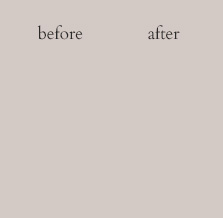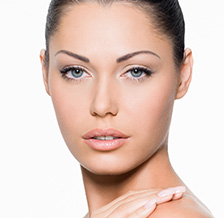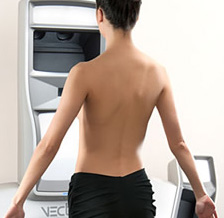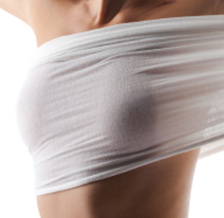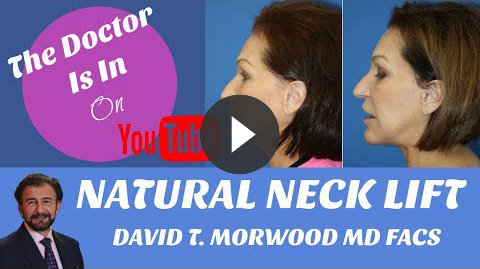An informational manual for women & men
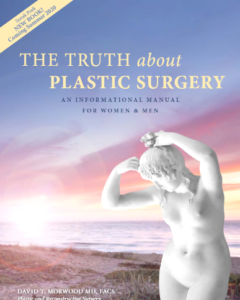
David T. Morwood MD, FACS
Plastic and Reconstructive Surgery
Why this book?
Everyone wants to look their best – it’s part of human nature; It is built into our human DNA.
The idea that appearance is important is certainly reinforced in every human interaction from a very early age. The best-looking children in the kindergarten seem to not only get the most attention from the teacher they seem to get the best grades. No doubt when it comes time for high school junior prom invitations the most attractive students have no trouble getting a date, and later in life whether it is choosing a romantic partner or trying to get a promotion at work, the best-looking men and women no doubt have an advantage. There are even good scientific studies that demonstrate mothers are genetically wired to be attracted to the typical “baby face” with big eyes, a small nose, and full cheeks. Whether we like it or not our appearance dramatically affects our self-image and being attractive gives a competitive edge.
And it is equally true that there is an endless stream of entrepreneurs and salesman trying to make themselves rich off that basic human desire. Just pick up a magazine, turn on the television, or surf the net and you will be bombarded with the latest magic cream that will rejuvenate your tired looking eyes, a new machine to melt fat, and a new type of face lift that barely requires incisions. It is no wonder that the average person finds all these choices confusing, and is often frustrated by a lack of accurate information to help guide them self through a process of improving their appearance. How is the average lay person to know if Botox is the right choice to minimize their wrinkles, if freezing fat really works, or if a laser actually will help tighten their skin?
In spite of a lack of accurate information, Plastic Surgery and beauty treatments have become a huge business – in 2018 over 16.6 billion dollars were spent by Americans seeking to improve their appearance. There were 17.7 million plastic surgery procedures, with 15.9 million of them being minimally invasive.
This book, The Truth About Plastic Surgery: An Informational Manual for Woman and Men is a response to the many myths and misconceptions that bombard people through common media. I was recently speaking with a few plastic surgery colleagues at a national plastic surgery meeting. We all had noticed a trend over the past few years – often the first 20 minutes of an office consultation we spend trying to correct what people had been led to believe by an ad they saw on TV or a pop up on the Internet or by a social media “influencer.”
I am very passionate about my chosen profession— plastic surgery can be a very powerful force effecting a person’s appearance and hence their self-image. My patients’ satisfaction is very important to me, and I have found that helping to educate my patients about plastic surgery is a very important part of the process of helping a patient to achieve their goals. In Latin, Doctor means teacher.
A number of years ago I started an educational seminar series in my office, The Truth About Plastic Surgery for people in the beauty industry such as hairstylists, make up artists, and massage therapists. I noticed that many of their clients would go to them for advice about choosing the best procedure to improve their appearance. We offered many presentations and educational seminars on different topics such as plastic surgery of the breast, body contouring, facial rejuvenation, the natural neck lift, plastic surgery for the active male, all designed to educate people in the beauty industry about realistic expectations and what plastic surgery could do and what it could not do. Because of popular demand we expanded these educational seminars to invite the general public.
Over the years I began to notice that these educational seminars would make the initial plastic surgery consultation much more productive and valuable. Patients would come to my office for a plastic surgery consultation already being familiar with some of our plastic surgery vocabulary, they would have a better idea about realistic expectations. Having already listened to my educational seminar they would have a good idea of my philosophy and my artistic and scientific approach to improving their appearance. Perhaps most importantly I began to notice that the patients who were educated and became familiar with their options and choices and alternatives were the happiest and most satisfied patients in my practice. Those patients who took an active role in decision making while designing their program to improve their appearance felt like we were partners in this process to help them achieve their goals, they were much more relaxed, much better informed about their postoperative care and activities, and much more likely to feel successful in achieving their goals.
This book, The Truth About Plastic Surgery, is an extension of those educational seminars. We use drawings, illustrations, anatomy images and hundreds of actual un-retouched before and after photos that my patients have given me permission to use for education. We want this book to help educate our patients about procedures, both noninvasive or minimally invasive, as well as the different surgical options available. Whether you choose an injectable procedure such as Botox or a filler, an operation such as a mommy makeover or liposuction, or deciding between a natural neck lift or a 3-dimensional facial rejuvenation, we share a common goal with our patients: we want you to be satisfied with your appearance and delighted with your result and improvement.
We devote individual chapters to topics such as the natural neck lift, facial rejuvenation, plastic surgery of the breast, eyelid rejuvenation, body contouring, plastic surgery for men, and on and on. In addition, we have included sections that we find helpful to patients such as getting the most out of your consultation, a guide to postoperative activities and how much time off you will likely require, information about selecting where to have your procedure such as in the office, at the surgery center, or at a hospital and information about getting medical clearance prior to an operation
Why Is It Called Plastic Surgery?
I am often asked if the reason my specialty is called “plastic surgery” is because we use a lot of plastic and silicone in our work. Actually, the Greek root “plasticos” means to mold, shape and tailor which is what plastic surgeons do. Plastic Surgery has been called that specialty that deals with the “skin and its contents,” and that surgical specialty that is concerned with the “form and function of the human body.” Unlike most other surgical specialties, we are not restricted to one part of the body; one day in my practice I may be doing breast augmentation, the next day a neck lift, the next day an abdominoplasty, then the next day a Brazilian butt lift. That helps to explain why there are 3 surgical specialties that share the longest training and residency period – cardiac surgery, neurosurgery, and plastic surgery – often times 8 years or more of internship, residency, and fellowships.
CHAPTER 2 THE AGING PROCESS
Why do I feel so young but look so old?!
Understanding how our appearance changes with time gives us powerful keys to help us look our best.
I am so active, I travel, workout and feel energetic, but I look in the mirror and I look so tired.
I feel so young, alert and vibrant, but I look at a picture of myself and I look so old.
I saw a photo of myself in a group that was taken from the side. I can’t believe all that extra tissue in my neck. Where did it come from?
Seems like in the past couple of years I have gone from being a plump plum to a shriveling prune. I look at myself and I see a raisin instead of a grape?!
What is it about this aging process – looking older than we feel, or appearing to be tired when we are actually energetic, just not looking as good as we feel?!
For years the aging process has been poorly understood. We all can look at a photograph set and know which picture shows an older person. We may not know if it is the same person, but we innately recognize the signs of aging.
Even plastic surgeons, dermatologists and other professionals in the beauty industry such as makeup artists and hairstylists can certainly recognize when a person is aging, but not everyone can actually articulate what those specific signs of aging are.
In recent years thanks to some long-term studies by doctors such as plastic surgeon Val Lambros, we are understanding the aging process, recognizing and being able to articulate and more closely describe those signs of aging. More importantly this understanding gives us more effective, more powerful tools to be able to minimize or counteract those signs of aging; we can actually help people to look their best, look more vibrant, and look as good as they feel.
It is not my goal to teach you how to do formal facial and beauty analysis and to then develop your own facial rejuvenation treatment plan, but it has been my experience over the years that an informed patient is able to best articulate what they would like to change and what they would like to see improved. Clearly in my practice that leads to an almost universal satisfaction with the treatment plan we design together and their result. One of the most important principles I can convey to you the reader in this book:
“Every patient deserves a custom-designed approach”
How we age depends upon genetics, our sun exposure, where we live, diet, nutrition, and weight fluctuations with time.
My patients deserve a custom designed approach developed after careful analysis. High quality, safe plastic surgery that results in the highest percentage of delighted patients does not start with the cookie cutter approach. It starts with individual analysis, listening to a patient about what they want, carefully examining them, looking at your photographs from that day during the initial office consultation, looking at their vector computer images in three dimensions, and if available comparing photographs from years prior. That is certainly true in my practice and for my patients. I am confident that the far majority of board-certified experienced plastic surgeons will agree with me.
Certainly, there are places and institutions you can find on the internet where everyone gets in line, you meet a surgical coordinator, you may not get to meet your surgeon until the day of surgery after you have paid, and everyone gets the same treatment plan. If you attend one of my educational seminars you will hear from me that every client deserves a customized approach. In my opinion, to do otherwise and recommend the same operation treatment for procedure to everyone who comes in is simply shortchanging the customer.
To understand the aging process we need to examine each anatomic layer, and go step-by-step through the anatomy and evaluate what has changed, and most importantly what can we effect and improve?
The relationship of the anatomic layers is quite consistent throughout the body:
The epidermis is on top of the dermis, supported by the subcutaneous fatty layer, then the subcutaneous fascia. Fascia is a connective tissue comprised primarily of collagen that is a latticework and scaffold that supports the soft tissues throughout the entire body. This is especially true in the superficial tissues like subcutaneous fat and skin. Most often there is some fatty layer underneath the fascia, then a heavier fascia over the muscle, which lays upon the periostium which is the cover of vascularized tissue over the bone.
It is important to convey that the aging process affects all the anatomic layers and not just the skin that you see, and certainly not only the epidermis and dermis. It is of course true that the skin after exposure to the sun loses some resilience, the collagen layer becomes thinner and more disorderly, the fascia can become weaker, the subcutaneous fat can atrophy and we actually can lose muscle mass and even bony mass as we mature.
In order for us to effectively deliver a CUSTOM DESIGNED APPROACH TO FACIAL REJUVENATION to every patient it is helpful to go through each an atomic layer and point out specifically what goes on during the aging process. High quality effective plastic surgery starts with an accurate knowledge of the anatomy.
- Epidermis
- Dermis
- Subcutaneous fatty layer
- Superficial fascia
- Deeper fatty layer
- Investing fascia of the muscle
- Muscular layer
- Periostium or lining of the bone
- Bony skeleton
Signs of Aging
Skin: Texture/Pigment changes/ Laxity/Loss of resilience/Thinner dermis/ Lines
Fat: Atrophy/Descent
Fascia: Laxity/ Loss of Resilience
Muscle: Less Tone / Mass
Cartilage: Loss of Resilience/Size
SKIN: EPIDERMIS ON TOP OF DERMIS
The skin is one of the first layers to show signs of aging. The epidermis lies upon the dermis, it is the layer that we see. Although we do not see the dermis when we look at someone most of the visible signs of aging get their start in the dermis. The dermis actually has multiple layers itself, and I call it the business end of the skin. It is where the strength is, the blood supply, where hair follicles, sweat glands and oil glands have their foundation. Also probably most importantly it is where the structural elements such as collagen, elastin and hyaluronic acids are found.
Although it feels good to feel the sun on our faces, and most of us love the feel of a sea breeze, it is exposure to these elements that tends to wear out the epidermis and dermis. The very top layer of the skin on the epidermis is not living. It is like hair and nails. It is the keratin layer. With exposure to wind and sun as the skin gets dried out the keratin layer get thicker and the skin loses its sheen and healthy glow. It is also the source of so-called sunspots, aging spots, and liver spots. Exposure to the sun and wind, results in chronic low level information in the body; the body lays down more melanin, and these tan and light brown spots become apparent. in a later chapter on skin rejuvenation we will learn about the Fitzpatrick scale of grading skin according to its response to sun.
Fitzpatrick Classification
Skin Type Sun Exposure History Skin Color
I Never tans burns easily and severely, extremely fair
II Usually burns tans minimally
III Burns moderately, tans moderately
IV Tans moderately and easily, burns minimally
V Rarely burns, dark brown skin
VI Never burns, dark brown or black skin
In some ethnicities more than others, for example in certain Asian and Hispanic population, these so-called sunspots are aging spots become quite obvious.
With exposure to the sun the structural elements such as collagen elastin and Hyaluronic acids are profoundly disrupted. Perhaps the single greatest factor causing aging of the skin is this disruption of collagen that occurs with exposure to the sun, hormonal changes and as time passes and we mature. Collagen is the basic building block making up the connective tissue in our body. It gives the dermis structure, and it gives strength and resilience to many structures such as fascia and ligaments and tendons. With exposure to the sun the collagen layer in the dermis gets thin, disorderly and in disarray. Also the elastin and hyaluronic acids are greatly diminished. Fortunately there are ways we can help to minimize this change as we will learn about in our chapter on skin rejuvenation.
Chronic Sun Exposure: PhotoAging
Dermal Elastosis – degeneration of dermal collagen and elastic fibers.
Skin becomes atrophic, dyspigmented, wrinkled, inelastic and leathery
Face / Neck / Chest / Hands / Arms
Histologic changes (microscopic view)
- Edpidermal thinning
- Disorganized collagen bundles
- Clumping of elastic fibers
- Dilated tortuous blood vessels
- Increased dermal inflammatory cells
- Increased melanin pigment
Subcutaneous fatty layer
One of the most important concepts I can convey in this chapter is that we tend to lose fat in the face, our hands and we put weight on in the trunk as we mature. I consider this an unfunny practical joke. With hormone changes, changes in metabolism and activity and with time that fatty layer tends to atrophy and get thinner – the face seems to “shrink with time.”
As that subcutaneous fatty layer atrophies and gets thinner the face loses volume; that is similar to letting air out of a balloon – it allows gravity to act on it to pull the face downward. Some authors even consider this loss of volume to be the most important factor in facial aging. very slowly, maybe 1.5 percent to as much as 3% every year after age 50, The face tends to lose volume and deflate. In future chapters, we will talk about ways to combat this phenomena. Perhaps the older more traditional surgical method was to remove what seems to be extra skin. We will learn how volume metric restoration and a rejuvenation procedure that lifts and fills tends to give a more natural healthy rejuvenated look to combat this deflation phenomena.
Keeping this principle in mind also helps us to explain why some people who are markedly obese or even overweight maintain a more youthful appearance long into adulthood. I have seen many patients who have undergone massive weight loss regimen, losing over 100 pounds, who have noticed that their face seems to show more signs of aging then were apparent when they were overweight. Again, with loss of volume, that allows gravity to pull down in the tissues, much like the letting water out of a water balloon leads to sagging.
As we mature we tend to lose fat cells in the face & hands and gain them in the trunk
Fascia
Fascia is the connective tissue that supports many layers of anatomy in the body. There is often a thin layer of fascia running under the subcutaneous fatty layer. In the body this is referred to as scarpa’s fashion. In the face this is analogous to the SMAS the superficial muscular aponeurotic system. In the neck the tissue that normally supports the platysma muscle is called the superficial cervical fashion. With time this fascia tends to get lax and lose its strength and resilience. The fascia covering the muscle is called the muscular investing fashion. This can also become weaker and have less resilience.
Muscle Loss
A loss of muscle tone and mass throughout The body as we mature is no surprise to anyone. Certainly staying active, regular exercise, proper nutrition and eating and in general caring for one’s health can slow this process down, however the far majority of planet earth inhabitants lose a significant amount of muscle tone and mass as they mature.
Bone loss, skeletal atrophy
Most people are familiar with loss of bony strength and mass in the long bones of the legs and arms with time. Serial studies show that there is an also significant loss of bony volume in the cranial facial skeleton. As the maxilla or upper jaw loses volume it tilts in a way to affect the mid-face and the dentition. The mandible, the large bone in the jaw continues to lose volume, and there is even loss of some volume in the skull. Once again this volume loss can have profound changes over time. even if there are only incremental volume changes each year by comparing the bony orbits (eyes socket), the temples, and the cheekbone it is easy to understand how this loss of bony volume effects one’s appearance.
It is interesting however to note that it seems that cartilage sometimes gets larger with time and has more volume. This might be particularly true in the ear and sometimes the nose. The cartilage tends to get larger in these two structures and even incremental changes in the size of the nose and ears can make a significant difference in a person’s appearance.
Now that plastic surgeons and other aging experts are able to delineate many of these specific changes and signs of aging that occur with time, we can begin to design effective ways to combat the aging process. We have not yet discovered the magical fountain of youth that Ponce de Leon traveled 10,000 miles trying to discover, but we have certainly come a long way towards helping someone look their best including a well-defined full-featured face with healthy definition. In the next chapter “a custom-designed approach to facial rejuvenation,” we outline experienced plastic surgeons, dermatologists and other aesthetic experts help to restore a youthful appearance.
CHAPTER 8 Natural neck lift
Natural Neck Lift
Everyone wants to look their best, but not everyone wants to change their face! We have discussed how the face is a powerful tool of communication and how we feel about ourselves and our appearance dramatically affects our every human interpersonal relationship.
That being said, over the years I have met so many people in my office who wanted to improve their appearance but felt like they did not want to change their face. During the initial consultation we typically sit together with a mirror, then look at their photos from prior years and compare with photos from today, then study their Vectra Computer images. It becomes clear that what they want to change is their neck and not their face. As we study their photographs more closely it becomes apparent that most of their signs of aging is not in their face, it is most obvious in the neck.
We have also discussed how part of the natural maturation process people tend to lose fat in the face and the hands, and gain fat in the trunk. As the soft tissues of the face descend it often leads to a heavy looking neck, prominent jowls and hides the previously strong chin and jaw line they once had.
I also frequently hear patients ask me if it is possible to do the neck and not the face, they wonder if there is an operation just for their neck, and some of them have been told it’s impossible to do a neck without doing the face. I am always happy to educate those people in my office that in fact they can have a neck and jowl lift without a facelift; we could bore them with hundreds of before and after pictures of happy patients who have had neck rejuvenation without having a facelift.
It is certainly true in great art, paintings and sculpture that the neck, chin, and jaw line is a strong focal point worthy of a great deal of attention from both the artist and the viewer.
It is clear while looking at photos of famous celebrities and models, that regardless of your ethnicity and even your gender, a crisp firm well-defined chin jaw and neckline serves as a great foundation for a beautiful face for a woman, and a handsome face for a man. Look no further than beautiful jewelry, necklaces and pearls that serve only to bring attention to a woman’s neck and décolletage.
I have seen so many of these people in my office with the same request, and after noticing how so many of them enthusiastically refer their friends to my office for the same procedure, some words of advice echoed in my mind from one of my best respected professors at USC, John Goin told me to “give patients what they want!” He felt strongly that the patient’s desires were most important, and what they wanted to change was more important than what the plastic surgeon thought should be changed or affected.
Hence the Natural Neck Lift concept was born.
Natural Neck Lift
A system of careful analysis evaluating appearance, anatomy, and goals with a Custom-Designed Approach
Everyone wants to look their best but not everyone wants to change their face.
Like the face, like the lower eyelid and like the breast, every patient deserves a custom-designed approach to their neck rejuvenation. Because everyone ages differently, we all have different skin, a different chin and jaw, the way to make the highest possible percentage of patients happy is to custom tailor a procedure based on what they need. A cookie cutter approach to any kind of plastic surgery can lead to a lot of dissatisfied patients.
As in facial analysis, we need to go step-by-step, layer by layer and analyze a person’s anatomy to determine what they need. Starting with the skin, the subcutaneous fat, then going deeper to analyze the muscle, then the deeper fatty layer and other structures under the muscle.
Every patient deserves
a custom approach.
The triangle of Facial Rejuvenation
- Volume
- Skin Texture
- Sagging Soft Tissue
And like analyzing the face, the triangle of facial rejuvenation is very helpful for custom designing a rejuvenation plan for a patient.
We first need to look at the texture of the skin.
Second is volume changes over the years; in the neck these volume changes can be an increase or a decrease.
We then examine the sagging soft tissues and then of course carefully analyze the all important foundation including the chin, the jaw and often times the laryngeal cartilage or Adam’s Apple.
Skin rejuvenation in the neck
In prior chapters we’ve discussed what lasers can do for the skin of the face. From removing tattoos to minimizing find lines, to lightening liver and age spots; lasers can be a valuable tool in facial rejuvenation. We have also illustrated what Chemical peels such as a TCA peel or Croton oil phenol peel can do in terms of rejuvenating the texture of the skin. There is a very important difference between the skin of the neck and the skin of the face.
The skin of the neck has far fewer pilosebaceous appendages then does the face and hence is very delicate. Pilosebaceous appendages are a fancy medical term for hair follicles, sweat glands and oil glands. Because of that relative shortage the skin of the neck is very fragile and delicate, and must be treated very carefully, very gently, and very judiciously. The same type of laser treatment of the face or TCA peel of the face applied to the neck can can lead to damaged skin and all too often can result in scarring. For this reason I am a big believer in moisturizing the skin of the neck, using sunblock, and getting regular facials from an aesthetician. Long-term high-quality skin care with medical grade skin products can go along way. It’s very important that any type of treatment for the décolletage of the anterior chest be treated very gently and carefully with any type of peeling agent or laser or light treatment.
CAUTION!
The skin of the neck is delicate and has fewer
pilosebaceous appendages than does the face!
SKIN CARE ESSENTIALS
- 1 Avoid Sun
- 2 Properly Cleanse
- 3 Exfoliate
- 4 Restore
- 5 Moisturize
- 6 Avoid Smoking
BOTOX FOR THE NECK
There is however one type of minimally invasive injectable treatment that can be helpful in rejuvenating the neck. Platysmal bands under the chin are caused by a tight platysma muscle and a lack of support from the superficial cervical fascia. Botox injections to the platysma muscle, in particular those bands that tend to show under the chin can be improved with this injectable treatment. To get the entire platysma muscle to relax takes a lot of Botox and of course we must be careful to remain within the safe zone when administering a large number of units to any part of the body. Getting the platysma muscle to relax can also help to elevate the corners of the mouth and to elevate some of the skin around the jaw because the platysma muscle access a depressor throughout the lower third of the face. In our previous section on Botox we reviewed how we perform a subtle reshaping of the brow by getting the depressors of the brow to relax in allowing the elevator muscle to selectively take over. A similar treatment principle applies to the platysma muscle and the lower third of the face.
Effecting volume in the neck
Affecting the volume in the neck or bringing about volume changes can be a very powerful tool to reshaping the entire chin jaw and neck area. We are most often removing volume from the neck either with micro liposculpture or by shifting volume from the neck back up toward the face. When there is excess fat in the neck, the skin quality is good, and there is adequate support for the platysma muscle from the superficial cervical fascia, then micro liposculpture or liposuction of the submentum, neck and cervical area can be very helpful. To perform microliposculpture I typically make three very small access incisions in order to introduce the cannula – the cannula is a small tube, like a large needle through which fat can be suctioned and removed. One small access incision is made where each ear lobe meets the cheek, and one in the submental crease under the chin.
These three access incisions leave a scar which is minimal, most often not noticed after a few weeks. I typically find that most Americans already have a scar under their chin because of a fall from a bike as a child, or when their little brother pushed them on the stairs, or when they tripped on a curb. By inserting the cannula thru three different incisions I can crosshatch and honeycomb and vacuum out fat all while shaping contouring and tailoring.
Liposuction – History
Uterine Currette(Yves- Gerard Illouz- 1980’s)
Blunt Currette
Suction Cannula
Hydrodissection -“ Wet technique”
Tumescent Technique -“ Super wet”
Hunstads Formula
Ultrasound Assisted
Power Assisted
Laser/water/radio frequency/assisted
Other external sources
Liposuction – Common areas
Women Men
Submentum Submentum
Axillary/Pectoral folds Lower Flanks
Waist Abdomen
Outer thighs
Natural Neck Lift; Actual Patients treated with micro liposculpture.
Will Liposuction work for me?
Look at the surrounding tissues
SKIN?
MUSCLE?
DEEPER LINES?
Volumetric Restoration
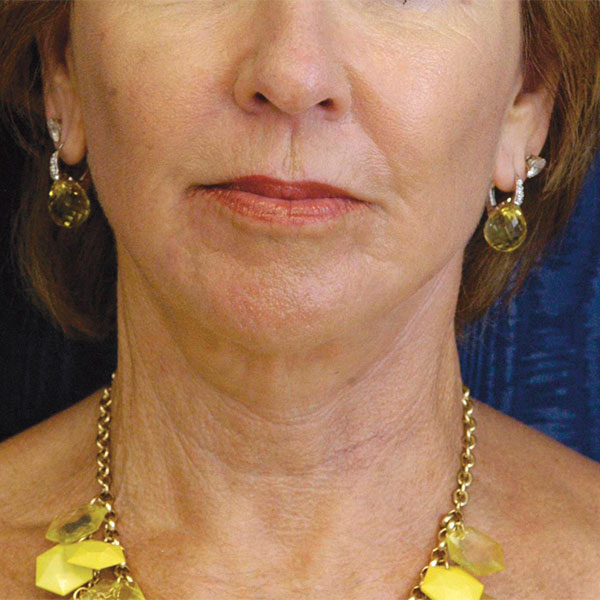
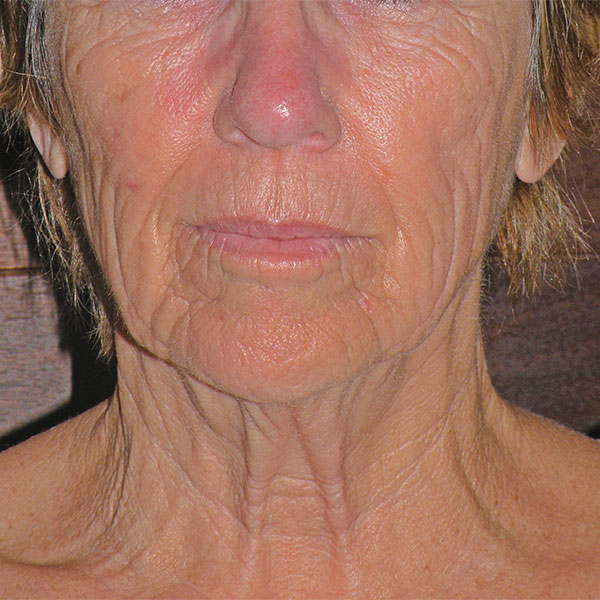 Another way we affect the volume in the neck, jaw and jowl area is with an open surgical procedure. Most often through a short incision, sometimes through a longer incision, we gain access to the fat and other soft tissues that have descended into the neck, we transpose and elevate that volume back higher into the face where it belongs, giving a more youthful, more vibrant look to the face and neck. We have discussed how an attractive face in a young woman is often heart shaped, and with time and maturing the volume shifts toward the jowls and the neck. As we mature the face may become more rectangular, more oval and with time and more settling the face can resemble an inverted triangle.
Another way we affect the volume in the neck, jaw and jowl area is with an open surgical procedure. Most often through a short incision, sometimes through a longer incision, we gain access to the fat and other soft tissues that have descended into the neck, we transpose and elevate that volume back higher into the face where it belongs, giving a more youthful, more vibrant look to the face and neck. We have discussed how an attractive face in a young woman is often heart shaped, and with time and maturing the volume shifts toward the jowls and the neck. As we mature the face may become more rectangular, more oval and with time and more settling the face can resemble an inverted triangle.
Natural Neck Lift; volumetric restoration patients
In order for our discussion to be more complete we should mention one more method of changing volume in the submental area. In our Medspa the nurses might discuss the option of a kybella injection under the chin. This treatment is discussed on our section on minimally invasive and non-invasive treatment methods. Kybella is de-oxycholic acid – essentially the same component in bile made by the liver and stored by the gall bladder – which melts fat and encourages resorption into the body for excretion. Like all treatments and procedures in plastic surgery, there are pros and cons to Kybella injections.
Soft Tissue Sagging
Loose Skin
As we analyze a person’s neck, we need to examine each individual layer by layer, all the while relying upon our triangle of rejuvenation. Addressing sagging soft tissue is a very important tool when considering rejuvenation of the neck. When there is saggy and loose skin there are two approaches that can be helpful.
The triangle of Facial Rejuvenation
Volume
Skin Texture
Sagging Soft Tissue
Remember:
As we age we tend to lose fat cells in the face & hands and gain them in the trunk!
Direct Neck Lift
The first approach is called the direct neck lift. We make an incision in the submental crease and then in the submental area to directly remove the skin. That is a straightforward relatively simple approach that can often be accomplished in the office. However, patients need to understand there will be a permanent visible scar whenever an incision is made. We certainly attempt to minimize the visibility of the scar by keeping it under the jaw and chin, however a patient must be fully aware that those scars are permanent and visible. Often times patients who may already have scars on their neck from a thyroid operation, from a cyst removal, or any previous neck operation, will not object to additional scars and will prefer this type of simple, straightforward procedure.
More commonly for patients who choose not to have those types of visible scars underneath her chin and jaw, we will gain access and be able to firm up and remove extra skin with incisions behind the ear and under and around the ear lobe. This is a much more common approach to neck rejuvenation. It allows us to not only firm up, remove, and re-drape extra skin but it allows us to gain access to the lateral platysma muscle to transpose and tighten that layer as well.
Loose Muscle
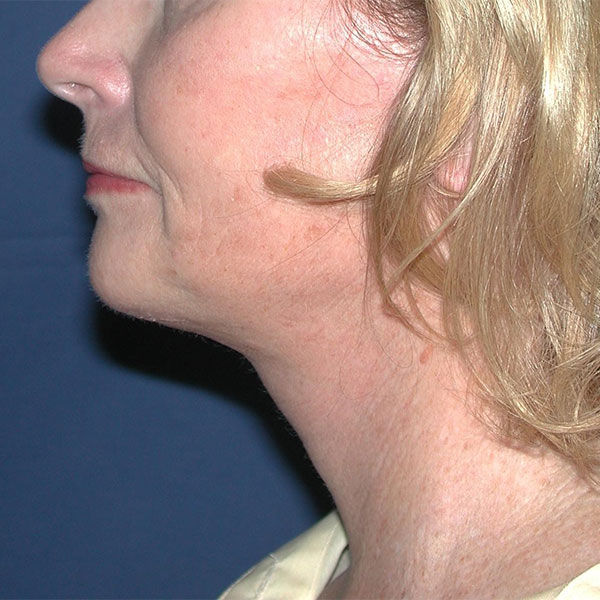
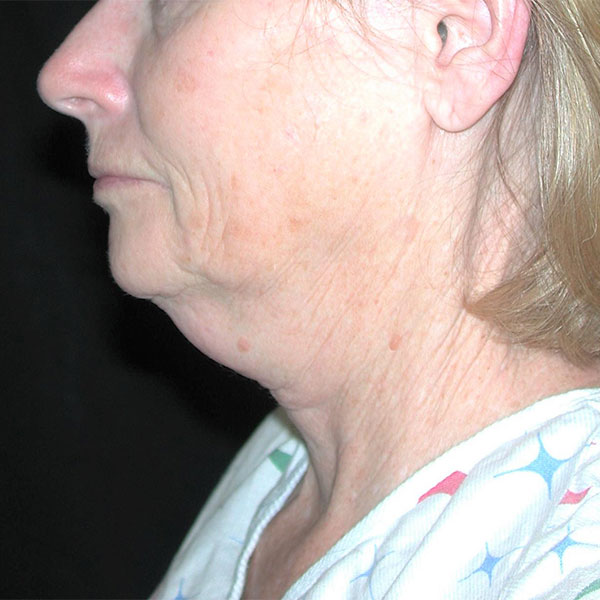 Going another layer deeper in our analysis we must evaluate the platysma muscle. I teach our patients that in a horse the platysma muscle is that very broad flat muscle that runs from the mandible or jaw of the horse about 3/4 of the way down its body. It allows a horse to shiver and shake off flies. In our species it is like the appendix; It is vestigial – it has no other function apart from giving plastic surgeons work.
Going another layer deeper in our analysis we must evaluate the platysma muscle. I teach our patients that in a horse the platysma muscle is that very broad flat muscle that runs from the mandible or jaw of the horse about 3/4 of the way down its body. It allows a horse to shiver and shake off flies. In our species it is like the appendix; It is vestigial – it has no other function apart from giving plastic surgeons work.
When the platysma muscle is lax or loose, and the superficial cervical fascia gets weak or stretched out with time the muscle must be addressed. We can gain access to the platysma muscle thru two different approaches: first, with an incision in the submental crease – is called a submental platysmaplasty. The second way to gain access to the platysma muscle is with incisions from the sides of the neck or from behind the ears. The goal is to re-create a sling or hammock that is firm and supportive to the deeper structures in the neck, allowing us to provide a much cleaner, crisper, cervical-mental angle ( the chin, jaw, and neck line ).
There is also a deep fatty layer underneath the platysma muscle. I will oftentimes sculpt, tailor, and trim this fatty layer to deepen the contour of the neck which creates a much more pleasing cervical mental angle.
Natural Neck Lift; platysmaplasty.
Natural Neck Lift for Men
In my practice, I will frequently see men who are interested in improving their chin, jaw and neckline. A crisp, clean firm well-defined chin, jaw and neckline serves as a very powerful foundation for a handsome, attractive face.
Sculpting the Foundation
Of course we have discussed how the triangle of facial rejuvenation rests upon a foundation. Sculpting the foundation can be very important in rejuvenation of the neck, and when needed can bring about dramatic changes. We will look at the relationship of the chin, the jaw, the mandible, and the laryngeal cartilage commonly called the Adam’s Apple.
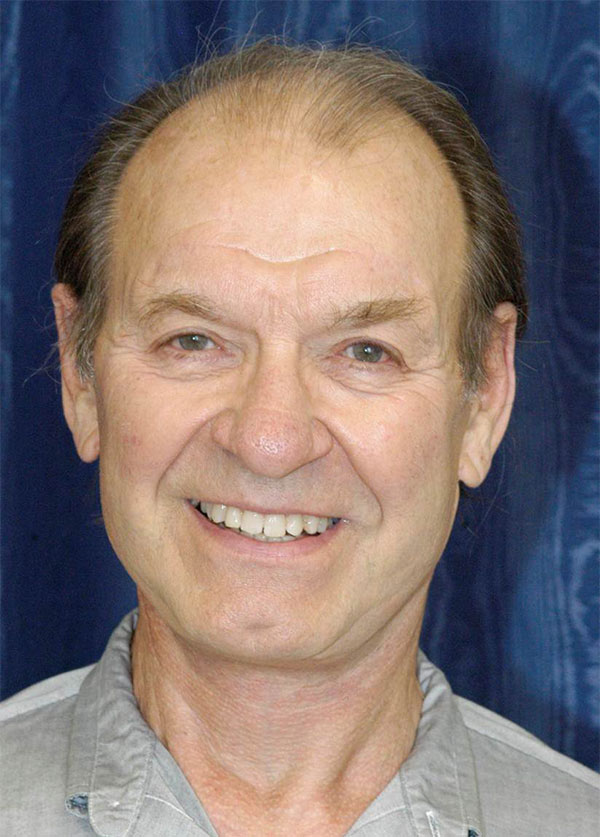
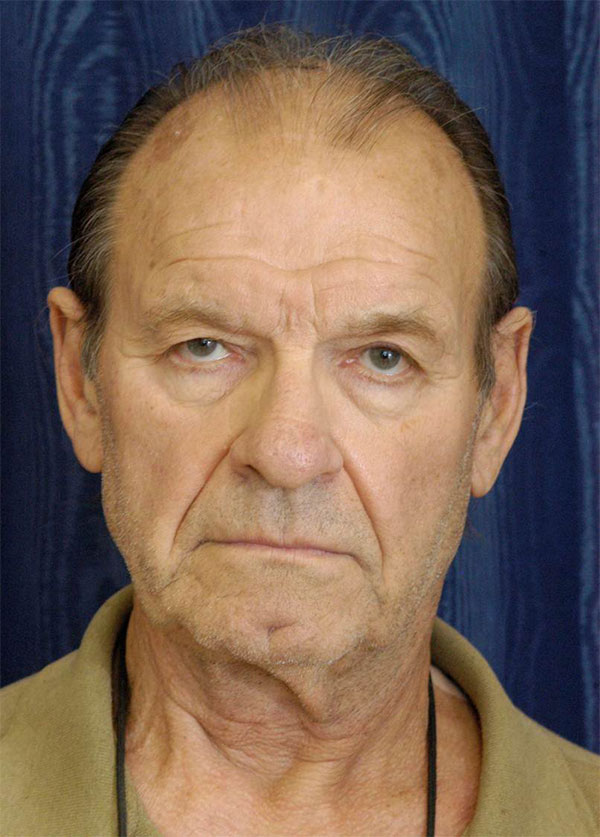 There are a few common ways to bring the chin forward or increase the projection. These include fillers which can give a conservative, subtle improvement, or fat grafting which can make a subtle to moderate change. The most dramatic improvements in chin projection come with either placement of a chin implant, or moving the actual bone of the chin forward, call a bony genio-plasty. This can be a very powerful maneuver to give a much more pleasing harmonious appearance to the chin and jaw and neck.
There are a few common ways to bring the chin forward or increase the projection. These include fillers which can give a conservative, subtle improvement, or fat grafting which can make a subtle to moderate change. The most dramatic improvements in chin projection come with either placement of a chin implant, or moving the actual bone of the chin forward, call a bony genio-plasty. This can be a very powerful maneuver to give a much more pleasing harmonious appearance to the chin and jaw and neck.
Certainly by now I hope the reader understands that a customized approach to neck rejuvenation gives the best results. We need to go layer by layer step-by-step, analyze what needs to be affected and then design a plan with the patient’s desires in mind to help achieve their goals.
For the patient who wants to look their best, but does not want to change their face, the natural neck lift is frequently just what the doctor ordered!
Of course for the patient who desires improvement in the cheeks and face as well as in the neck, the neck lift can be combined with a facelift to give a more uniform overall and harmonious improvement in the face and neck combined.
A Plastic Surgeon’s Secret:
One of the ways to get the most out of your consultation—
bring in photos of years prior and study how your appearance
has evolved and what you want to change.


